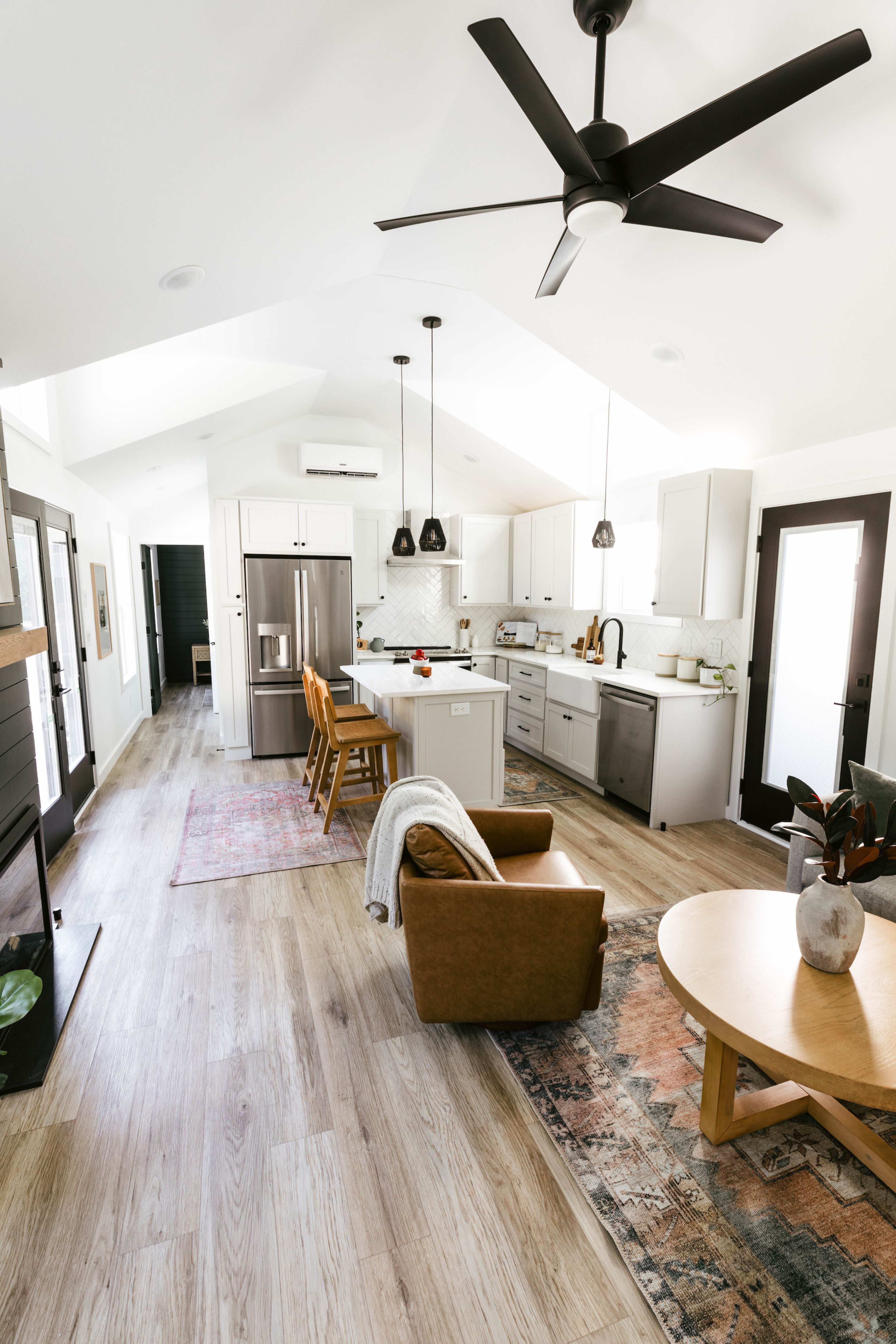How to live large in a small home

There is no denying that American homeowners are used to living with more. Last year, the average new home sold was a whopping 2,559 square feet in the U.S. — and 2,608 square feet in the South — according to a Lending Tree study released this summer.
But living large is not for everyone. Many Americans live with far less, whether by necessity or choice. Some live in cities with high rents and mortgages and can’t afford a lot of space. Others downsize to a condo after raising children in suburbia. And more are opting for tiny homes to save money, simplify their lives and reduce their environmental footprint.
Clint Gooch, the owner of Mustard Seed Tiny Homes in Buford, Georgia, works with people who embrace living in a smaller space. Gooch has traveled the world and noticed how paring back can go hand in hand with a better quality of life.
“Most people have a small home but not a lot of stuff,” he said about lifestyles he’s seen abroad. “And they had a joy and a peace that we just don’t have here.”
Mustard Seed’s homes range from 700 to 800 square feet, which makes Gooch well-versed in how to get the most out of less space.

But what can you do with all the stuff you’ve accumulated? Interior designers and tiny home experts offer these suggestions for doing more with less and tricking the eye into viewing a smaller space as a bigger one.
Maximize closet space
Closets become useful command centers when you invest in a storage system that makes use of every inch of vertical and horizontal space. Homeowners are also turning extra closets into work-from-home spaces with the addition of a desk, lighting and storage.
Lean into outdoor areas
Having outdoor space is almost a necessity when you live smaller. Whether it is a yard or a balcony, the outside should be an extension of your home and be outfitted with what you need to enjoy it throughout the year.
Mount your TV
The more you can do to get rid of bulky furniture and keep your floors free of objects, the cleaner and lighter your space will feel.

Embrace a minimalist lifestyle
Gooch is a firm believer in the mantra “less stuff, more life.” Get rid of clutter. Have a place for everything and have everything in its place.
Elongate walls and ceilings
Gooch uses shiplap paneling, or wood planks, on ceilings to make them appear longer. Atlanta interior designer Liz Williams recommends hanging curtain rods as close to the ceiling as possible to give rooms visual lift and make them feel bigger.
A storage system is your friend
Gooch’s family uses clear plastic bins labeled with the contents inside to storeessentials. Williams recommends investing in storage with consistent, visually appealing material such as baskets or white lacquer boxes.
Trick the eye with rugs
Throw rugs are a great way to differentiate areas in smaller spaces.

Use under-bed storage
A bed frame with built-in drawers can take advantage of otherwise wasted space, said Williams, who used that strategy when she recently moved her daughter into a tiny New York apartment.
Live seasonally
If you have an attic, basement or storage unit, pack away the items you don’t need each season to streamline your space.
Invest in smart home tech
Brett Baker is director of residential development at the Trilith planned community south of Atlanta with micro homes from 380 to 900 square feet. He recommends smart home technology to reduce the need for multiple remotes and light switches.

Use lighting strategically
Megan Lichty of Auld House Design helps design the Trilith micro homes. She suggests using wall sconces or ceiling pendants to eliminate the need for more tables for lamps.
Embrace multipurpose rooms
Formal living rooms and dining rooms only used for special occasions are going the way of the dinosaur. To get the most out of your space, think multi-functionality. A guest room can double as a home office when company isn’t visiting. Williams recently created a dining room/library to get the maximum use out of one client’s space.
Decorate with scale in mind
Scale is critically important in smaller houses and apartments. Make sure that your sofa and other furniture aren’t too large because they can make the space feel smaller. Appliance companies are starting to downsize refrigerators, sinks, microwaves and stoves to accommodate the smaller living trend, though Baker warns that “you really have to research the items ... to make sure that they’re quality, that they’re tested.”
Create a floor-to-ceiling gallery wall
When clients are downsizing to a small space, Williams said, they will often create “one big gallery wall and use the whole wall and go almost up to the ceiling with it. It really makes the room feel bigger.”
Felicia Feaster is a longtime lifestyle and design editor who spent 11 years covering gardening, interior design, trends and wellness for HGTV.com. Felicia is a contributor to MarthaStewart.com and has been interviewed as a design expert by The New York Times, Forbes and the Associated Press.

